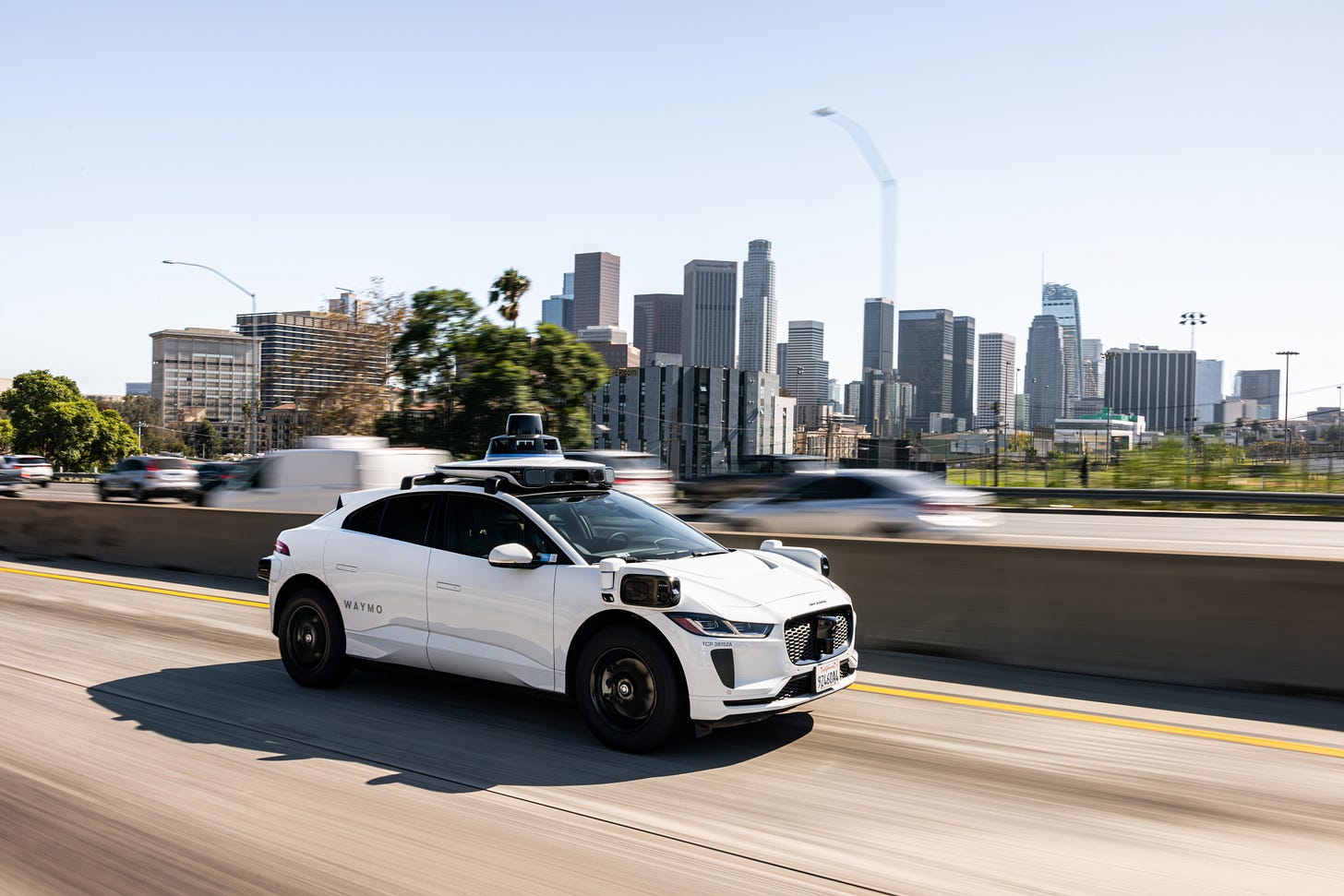Waymo is finally ready for freeway service
The self-driving leader is getting ready to conquer the Sun Belt.
In May 2023, Waymo expanded its service area to cover a larger chunk of the Phoenix metro area. Soon afterwards YouTuber Lorraine decided to pit Waymo and Tesla against one another in a head-to-head race across this expanded territory.
By taking Interstate 10, the Tesla vehicle was able to complete the 21-mile trip in about 26 minutes. Waymo avoided freeways, which meant it took nearly 55 minutes — more than twice as long — to reach the same destination.
“I’m not sure why Waymo is restricted from using freeways, but as their map grows, freeway support will become necessary,” Lorraine said.
Waymo operates mainly in sprawling southern cities like Phoenix, Los Angeles, and Atlanta. In places like this, the inability to access freeways is a huge handicap. Even in San Francisco, the most urban place Waymo operates, many trips take longer because Waymo doesn’t use Interstate 280.
Now all that is about to change. On Wednesday, Waymo announced it would begin offering freeway service to customers in Phoenix, Los Angeles, and the San Francisco Bay Area. It’s a big technological leap that transforms Waymo’s service from a novelty to a serious rival to Uber and Lyft.
There are several other driverless taxi companies, including Tesla and Amazon’s Zoox. But none of them have begun offering driverless freeway service. Tesla still has a human safety operator in every commercial vehicle. Zoox offers driverless rides, but I haven’t seen any reports of Zoox providing freeway service to the general public.
Waymo says it will route customers onto freeways “when a freeway route is meaningfully faster.” Its vehicles will obey the speed limit except in rare situations. Given how common speeding is on freeways, this could mean that Waymo vehicles wind up moving significantly slower than the flow of traffic.
In this piece I want to answer two questions: Why did it take so long for Waymo to begin offering driverless freeway service? And what’s next for the company?
Why freeway service is so difficult
In many ways, freeways are less complex than surface streets. A vehicle just needs to stay in its lane and maintain a safe distance from the vehicle ahead. It is unlikely to encounter pedestrians, cyclists, or complicated four-way intersections.
This is why plenty of self-driving projects — including Tesla’s — experimented first with freeways before moving on to surface streets.
By 2013 Waymo, then called the Google self-driving project, had already developed technology that could navigate on freeways under the supervision of a Google employee.
But while it’s fairly easy to build a freeway driving system that operates under human supervision, it’s very difficult to dispense with the driver.
Keep reading with a 7-day free trial
Subscribe to Understanding AI to keep reading this post and get 7 days of free access to the full post archives.


